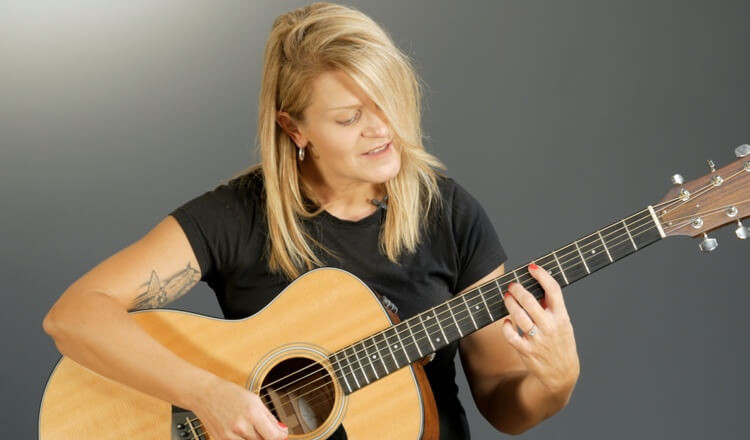Learning guitar chords can be an exciting journey, but some chords can feel like stumbling blocks, especially for beginners. The F Sharp Minor Guitar Chord (F#m) is often one of those challenging chords. It’s frequently searched for on guitar resources like guitarplayers.net, and for good reason. The most common way to play F#m involves a barre, a technique where one finger presses down multiple strings at once, which can be tough for developing fingers.
But don’t worry! This guide will break down the F#m chord in detail and show you not just one, but three ways to play it, ranging from the standard barre chord to easier, beginner-friendly versions. We’ll explore each version, explain why the barre chord is tricky, and provide solutions to make playing F#m achievable for guitarists of all levels.
Why is the F#m Chord a Challenge for Guitarists?
The F#m chord’s reputation for being difficult mainly stems from its most common voicing: the barre chord. Barre chords require significant finger strength and dexterity to press down multiple strings cleanly and avoid buzzing. For beginner guitarists who are still building finger strength and calluses, this can feel frustrating.
However, it’s important to understand that barre chords are a fundamental guitar skill that unlocks a vast world of chord possibilities. While F#m barre chord may seem daunting now, mastering it is a worthwhile goal that will significantly expand your guitar playing abilities.
Luckily, if you’re not quite ready for the full barre F#m, there are easier alternatives that still allow you to play songs in F# minor keys. Let’s explore these different versions, starting with the standard barre chord.
The Standard F# Minor Barre Chord (F#m)
This is the classic, full-bodied F#m chord that you’ll often find in chord diagrams and songbooks. It’s a movable shape, meaning you can use the same finger pattern to play other minor chords by simply shifting it up or down the neck. However, for beginners, getting this shape to ring clearly can be tricky.
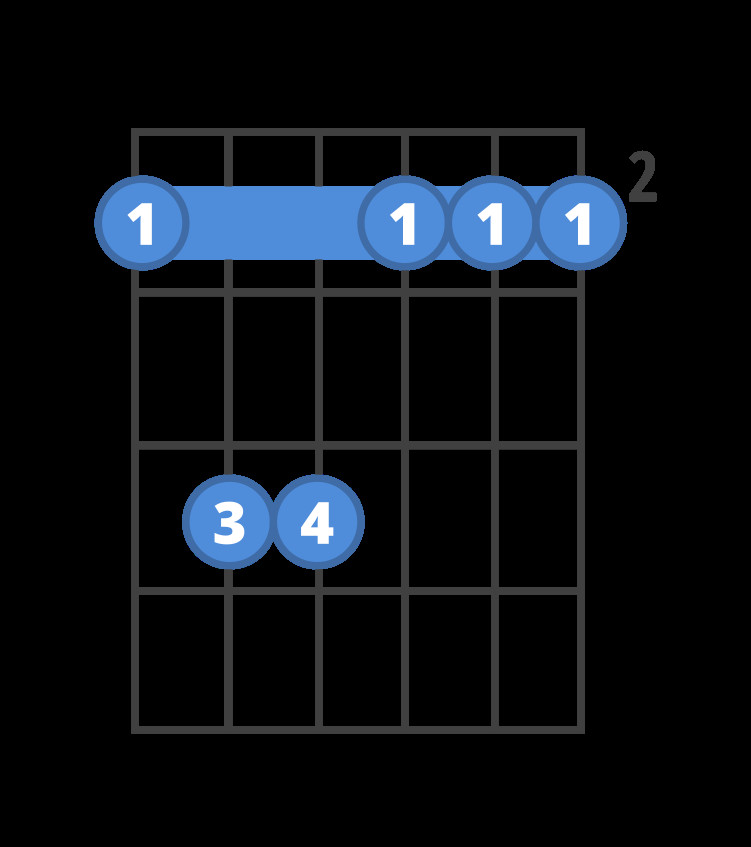 Chord diagram for the standard F#m guitar chord.
Chord diagram for the standard F#m guitar chord.
Fingering for the Standard F#m Barre Chord:
- Index Finger (1st finger): Barre across all six strings at the 2nd fret. Ensure the tip of your finger is slightly angled towards the headstock for better leverage. Apply firm, even pressure across all strings.
- Ring Finger (3rd finger): Place on the 5th string (A string) at the 4th fret.
- Pinky Finger (4th finger): Place on the 4th string (D string) at the 4th fret.
Strumming: Strum all six strings.
Common Issues and Tips for the Standard F#m:
- Buzzing Strings: Buzzing is often caused by insufficient pressure from the barre finger. Make sure you are pressing firmly and evenly across all strings, especially behind the fret. Experiment with slightly rolling your barre finger to find the sweet spot.
- Finger Fatigue: Barre chords can be tiring initially. Take breaks, practice in short sessions, and gradually build up your finger strength. Regular practice is key!
- Clean Sound: Focus on pressing down only as hard as necessary to get a clear sound. Over-squeezing can lead to tension and fatigue.
Why Practice This Version?
While challenging, the standard F#m barre chord is crucial for:
- Developing Barre Chord Technique: Mastering this chord builds essential barre chord skills applicable to countless other chords and songs.
- Full Sound: This voicing provides the richest and fullest sound of the F#m chord.
- Chord Voicing Options: Understanding barre chords opens up a wider range of chord voicings and musical possibilities.
If the full barre F#m feels too difficult right now, don’t get discouraged! Let’s move on to an easier barre chord variation.
Easier F#m: The Mini-Barre Version
One way to make barre chords easier is to reduce the number of strings you need to barre. This “mini-barre” version of F#m is less demanding on your index finger and can be a great stepping stone to the full barre chord.
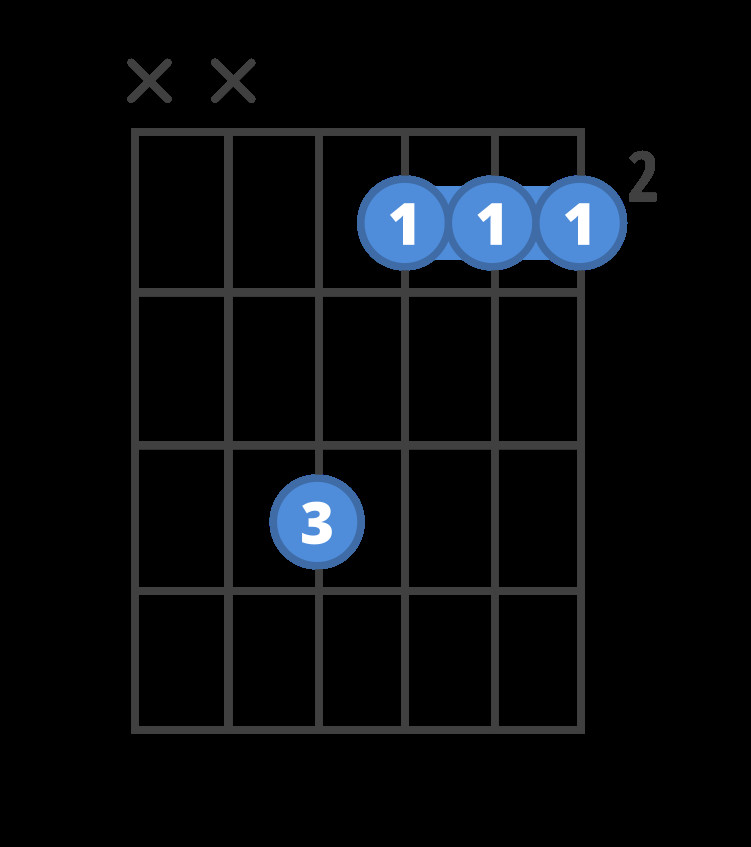 Chord diagram for the easier, smaller barred version of the F#m guitar chord.
Chord diagram for the easier, smaller barred version of the F#m guitar chord.
Fingering for the Mini-Barre F#m Chord:
- Index Finger (1st finger): Barre across the top three strings (1st, 2nd, and 3rd – B, G, and D strings) at the 2nd fret. Focus your pressure on these three strings.
- Ring Finger (3rd finger): Place on the 4th string (D string) at the 4th fret.
Strumming: Strum only the thinnest four strings (from the D string down to the high E string). Avoid strumming the lower E and A strings.
Advantages of the Mini-Barre F#m:
- Easier Barre: Barring only three strings requires less finger strength and precision.
- Good Practice for Full Barres: This version helps you develop the barre technique in a less overwhelming way.
- Still Sounds Like F#m: While not as full as the 6-string version, it still clearly conveys the F#m sound, suitable for many musical contexts.
This mini-barre F#m is excellent for practicing barre technique and getting comfortable with the chord shape before tackling the full barre. But what if you want to play F#m without any barre at all? There’s a version for that too!
The Easiest F#m: No Barre Needed!
For absolute beginners or those who want a quick and easy F#m option, this version eliminates the barre entirely. It’s a simplified voicing that focuses on the essential notes of the F#m chord.
Fingering for the No-Barre F#m Chord:
- Index Finger (1st finger): Place on the 3rd string (G string) at the 2nd fret.
- Middle Finger (2nd finger): Place on the 2nd string (B string) at the 2nd fret.
- Ring Finger (3rd finger): Place on the 1st string (high E string) at the 2nd fret.
Strumming: Strum only the thinnest three strings (1st, 2nd, and 3rd – high E, B, and G strings). Crucially, avoid strumming the thicker, lower strings (E, A, and D).
Benefits of the No-Barre F#m:
- No Barre Required: Perfect for beginners or when you need a quick and easy F#m.
- Minimal Finger Strength Needed: Requires very little finger strength to play cleanly.
- Good for Simpler Songs: Works well in simpler songs or arrangements where a full, bass-heavy F#m isn’t necessary.
Limitations:
- Thinner Sound: This version has a thinner, less full sound compared to the barre chord versions.
- Context Dependent: Best suited for specific musical contexts where a lighter F#m sound is appropriate.
Despite its limitations, the no-barre F#m is a valuable tool for beginners and for situations where ease of playing is prioritized.
Practice Resources to Master F#m
Learning any new chord takes practice, and F#m is no exception. To effectively learn and solidify your F#m chord skills, consider utilizing practice tools and resources.
Barre Chord Lessons: Since the barre version of F#m is the most common and often the most challenging, focusing on barre chord technique is highly beneficial. Look for lessons specifically designed to demystify barre chords and build your skills. Resources like video lessons can be particularly helpful in visualizing proper technique and hand positioning.
Practice Games and Flashcards: Interactive tools like chord games and flashcards can make practice more engaging and efficient. These tools often provide immediate feedback and help you develop muscle memory for chord shapes and transitions.
Chord Transition Practice: Being able to switch smoothly between chords is just as important as forming the chords themselves. Practice transitioning between F#m and other common chords. Good chord pairings to practice with F#m include:
- F#m and A Major: A very common and musically pleasing progression.
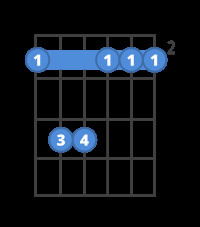 Chord diagram for F#m guitar chord.
Chord diagram for F#m guitar chord.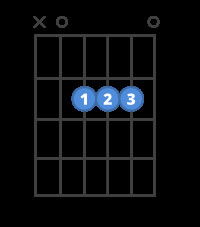 Chord diagram for A major guitar chord.
Chord diagram for A major guitar chord.
- F#m, A Major, D Major, and E Major: A slightly more complex but still very common and useful chord progression in many songs.
 Chord diagram for F#m guitar chord.
Chord diagram for F#m guitar chord. Chord diagram for A major guitar chord.
Chord diagram for A major guitar chord.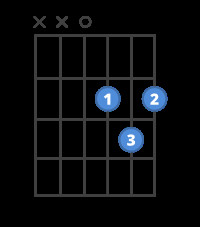 Chord diagram for D major guitar chord.
Chord diagram for D major guitar chord.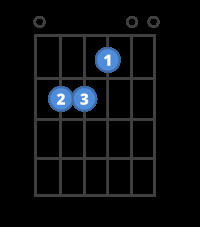 Chord diagram for E major guitar chord.
Chord diagram for E major guitar chord.
By practicing these chord changes, you’ll improve your fluidity and musicality on the guitar.
Conclusion: F#m Mastery is Achievable
The F sharp minor guitar chord, while initially challenging, is absolutely achievable for any guitarist. By understanding the different ways to play it – from the full barre chord to easier alternatives – and by utilizing effective practice techniques, you can confidently add F#m to your chord vocabulary.
Don’t be discouraged by the barre chord’s reputation. Start with the easier versions, gradually work your way up to the full barre, and remember that consistent, focused practice is the key to success. With dedication, you’ll be playing F#m and unlocking new musical possibilities on your guitar in no time!

